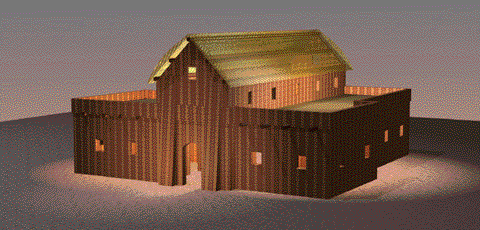HOME / Table of Contents = Civilizations - Cultures - Areas - Regions - Prehistory
Other Archaeological Sites / The Neolithic of the Levant (500 Page Book Online)
Hassuna Culture (6000 BC - 5250 BC)
 By around 6000 BC people had moved into the foothills (piedmont) of northernmost Mesopotamia where there was enough rainfall to allow for "dry" agriculture in some places. These were the first farmers in northernmost Mesopotamia (Assyria). They made Hassuna style pottery (cream slip with reddish paint in linear designs). Hassuna people lived in small villages or hamlets ranging from 2 to 8 acres. Even the largest Hassuna sites were smaller than PPNA Jericho had been 1000 years before and much smaller than Çatal Hüyük, which was still occupied in Anatolia. Probably few if any Hassuna villages exceeded 500 people ...
By around 6000 BC people had moved into the foothills (piedmont) of northernmost Mesopotamia where there was enough rainfall to allow for "dry" agriculture in some places. These were the first farmers in northernmost Mesopotamia (Assyria). They made Hassuna style pottery (cream slip with reddish paint in linear designs). Hassuna people lived in small villages or hamlets ranging from 2 to 8 acres. Even the largest Hassuna sites were smaller than PPNA Jericho had been 1000 years before and much smaller than Çatal Hüyük, which was still occupied in Anatolia. Probably few if any Hassuna villages exceeded 500 people ...
Read the Hassuna Outline Here Reproduced With Permission
of Dr. Bruce Owen at Sonoma State University ...
At Tell Hassuna, south of Mosul, adobe dwellings built around open central courts with fine painted pottery replace earlier levels with crude pottery. Hand axes, sickles, grinding stones, bins, baking ovens and numerous bones of domesticated animals reflect settled agricultural life. Female figurines have been related to worship and jar burials within which food was placed related to belief in afterlife. The relationship of Hassuna pottery to that of Jericho suggests that village culture was becoming widespread ...
The History of the Ancient Near East Electronic Compendium
